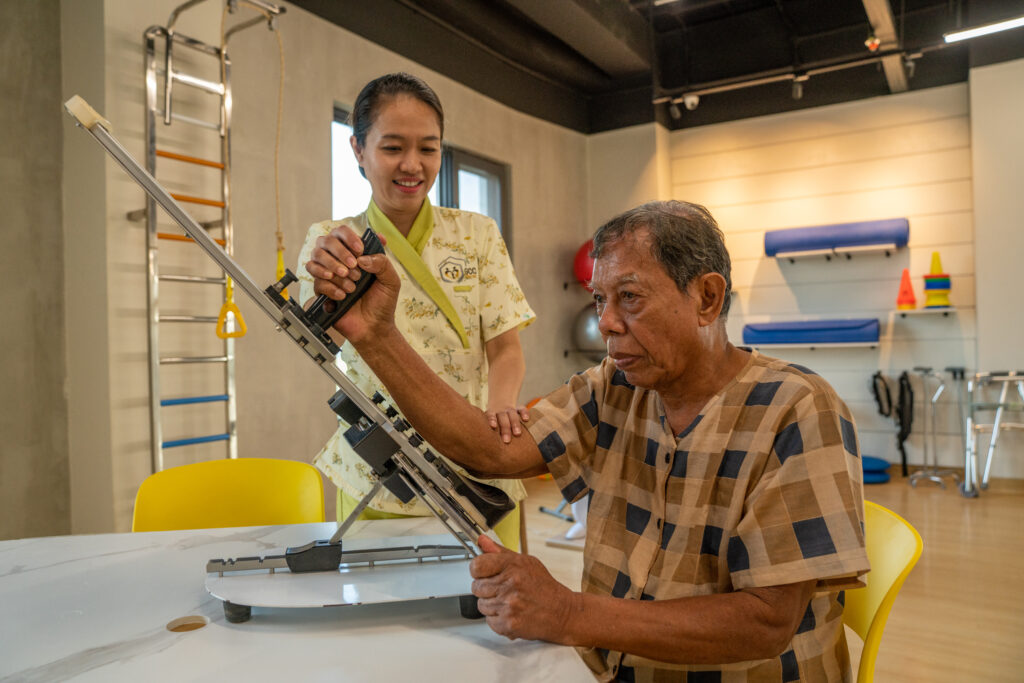Our Rehabilitation Centre serves the residents as the meaningful golden time by restoring function or enhancing residual functional capacity and improving the quality of life of the older people, particularly those with disabling impairments and/ or frailty. Physiotherapy for seniors.
Our physiotherapy service is under the professional physiotherapists. Physiotherapy treatment plan for residents will be focused on:
- Achieving functional independence in Activities of Daily Living (ADL)
- Participation in team work promoting moral support
- Recreation and education with individuals being able to achieve meaningful roles in daily life
Service
1.Rehabilitation for the residents
The physiotherapy service will begiven to promote or maintain their functions.
2. Out-patient
- Day Rehabilitation
- The physiotherapy is designed according to the consultant’s referral.
- Day Care
- It refers to day care activities program.
Both individual and group physiotherapy are available.
Aims – Maintaining muscle strength
- Improve/ maintain balance, co-ordination
- Prevention associated complications
- Improve/ maintain cognitive function
Available therapeutic modalities are:
- Infra-red therapy
- Ultrasound
- TENS
- Electrical Stimulation
- Active-passive trainer
- Manual cycling for upper and lower limbs





Physiotherapy plays a crucial role in enhancing the physical health, mobility, and overall quality of life for elderly individuals. As people age, they often face challenges such as decreased strength, balance, flexibility, and coordination, which can increase the risk of falls, injuries, and a decrease in independence. Physiotherapy helps manage these issues through targeted interventions, promoting physical rehabilitation, preventing disability, and supporting older adults in maintaining or regaining independence.
- Improve mobility and independence
- Reduce pain and discomfort
- Enhance strength and endurance
- Increase balance and reduced fall risk
- Faster recovery post-surgery or injury
- Better posture and spinal alignment
- Improve quality of life by maintaining physical function and preventing disability
- Improve/ maintain cognitive function
- Strengthening exercises (using weights, bands, or machines)
- Stretching exercises for flexibility
- Balance exercises (e.g., standing on one foot, heel-to-toe walking)
- Gait training (working on walking patterns, stride, and posture)
- Manual therapy (joint mobilization, soft tissue techniques)
- Electrotherapy (e.g., Transcutaneous Electrical Nerve Stimulation – TENS)
- Postural correction exercises (e.g., exercises to align the spine)
- Breathing exercises (especially for those with respiratory conditions like COPD)
- Neurological Rehabilitation (focuses on strengthening muscles, improving coordination, and enhancing functional mobility)














